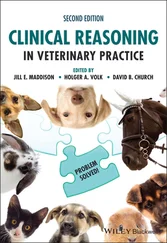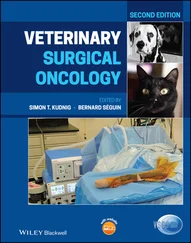Clive Elwood - Leadership in Veterinary Medicine
Здесь есть возможность читать онлайн «Clive Elwood - Leadership in Veterinary Medicine» — ознакомительный отрывок электронной книги совершенно бесплатно, а после прочтения отрывка купить полную версию. В некоторых случаях можно слушать аудио, скачать через торрент в формате fb2 и присутствует краткое содержание. Жанр: unrecognised, на английском языке. Описание произведения, (предисловие) а так же отзывы посетителей доступны на портале библиотеки ЛибКат.
- Название:Leadership in Veterinary Medicine
- Автор:
- Жанр:
- Год:неизвестен
- ISBN:нет данных
- Рейтинг книги:4 / 5. Голосов: 1
-
Избранное:Добавить в избранное
- Отзывы:
-
Ваша оценка:
- 80
- 1
- 2
- 3
- 4
- 5
Leadership in Veterinary Medicine: краткое содержание, описание и аннотация
Предлагаем к чтению аннотацию, описание, краткое содержание или предисловие (зависит от того, что написал сам автор книги «Leadership in Veterinary Medicine»). Если вы не нашли необходимую информацию о книге — напишите в комментариях, мы постараемся отыскать её.
Leadership in Veterinary Medicine
Leadership in Veterinary Medicine
Leadership in Veterinary Medicine — читать онлайн ознакомительный отрывок
Ниже представлен текст книги, разбитый по страницам. Система сохранения места последней прочитанной страницы, позволяет с удобством читать онлайн бесплатно книгу «Leadership in Veterinary Medicine», без необходимости каждый раз заново искать на чём Вы остановились. Поставьте закладку, и сможете в любой момент перейти на страницу, на которой закончили чтение.
Интервал:
Закладка:
Ultimately, I have written the book I would have wanted to read many years ago.
1.5 How to Use This Book
The book is divided into two parts:
Part Onecovers major areas of veterinary leadership. It is discursive and aims to distil and make relevant information accessible. Each chapter is subdivided into subject areas and supported by tables, figures, vignettes, references, and further reading as appropriate.
Part Twoincludes a number of leadership challenges, designed to cover a range of situations where veterinary professionals may need to show leadership, and aimed at encouraging deeper engagement with, and holistic integration of, the material presented in Part One. These scenarios can be used as you see fit; for your own reflection, in discussion with others or to stimulate learning in any other way.
1.6 What Is ‘Good Enough’?
If you are still wondering why we need to think more about leadership in veterinary medicine, perhaps it is helpful to reflect on what ‘bad’ leadership looks and feels like. It is likely that everyone has been on the receiving end of leadership behaviours and actions that have left them feeling angry, frustrated, cynical, and de‐motivated. The veterinary professions are rife with such tales and have been for as long as I have been a student of veterinary medicine and, I am sure, a long time before that. On the other hand, ‘good enough’ leadership, in the everyday, often goes unnoticed and unrecognised. Let's help bring leadership forward as an essential part of professional life; worth studying, understanding, practising, and improving.
Questions
1 Look around you at the ‘not good enough’ and the ‘good‐enough’ leadership. How would you like people to experience your leadership?
2 What does ‘leadership’ mean to you? How do you feel about leadership as a discipline? Why might that be?
3 Think about your leadership challenges. What do you hope to take away from this book that will help you?
Further Reading
1 West, M., Armit, K., Loewenthal, L. et al. (2015). Leadership and Leadership Development in Health Care: The Evidence Base. London: The Kings Fund.
References
1 de Haan, E. and Kasozi, A. (2014). The Leadership Shadow: How to Recognize and Avoid Derailment, Overdrive and Hubris. London: KoganPage.
2 Jena, A.B., Rotenstein, L.S., and Sadun, R. (2018). Why doctors need leadership training. Harvard Business School Cases: 1–6.
3 Kotter, J.P. (1990). What leaders really do. Harvard Business Review 37 (3): 18–28. https://doi.org/10.4324/9781315250601‐2.
4 West, M., Armit, K., Loewenthal, L. et al. (2015). Leadership and Leadership Development in Health Care: The Evidence Base. London: The Kings Fund.
5 Yukl, G. (2013). Leadership in Organisations, 8e. England: Pearson Education Limited.
6 Zipperer, L.A. (2014). Patient Safety : Perspectives on Evidence, Information and Knowledge Transfer. Farnham, Surrey, England: Routledge.
2 Veterinary Leadership in Context
In this chapter we will explore:
The history and purpose of the veterinary professions
Their place in society and the needs they serve as society changes
The complexities and paradoxes that result
How veterinary professionals might resolve these conflicts through their professional identities
The current status, and future needs, of leadership in the veterinary context
2.1 Introduction
‘There are these two young fish swimming along and they happen to meet an older fish swimming the other way, who nods at them and says “Morning, boys. How ' s the water?” And the two young fish swim on for a bit, and then eventually one of them looks over at the other and goes, “What the hell is water?”’
David Foster Wallace
How many times have you been with a group of colleagues at the dinner table discussing the joys of a nice juicy cat bite abscess, only to realise the unfortunate lay person among you has dropped their knife and fork and turned an unpleasant shade of green…? [Insert alternative personal anecdote here.] There is a context to our work as veterinary professionals that we, inevitably, take for granted and that may even be out of our consciousness, at least on a day‐to‐day basis.
Whilst organisations may have publicly stated ideas about what they are for and ‘what they do’, there also levels of ‘what we really believe we are doing’ and ‘what is actually going on’ (Stokes, J. in Obholzer and Roberts 1994). The concept of ‘what is actually going on’ is encapsulated in the exploration of the hidden curriculum in veterinary teaching institutions and the enculturation of veterinary students as they develop into professionals (Mossop et al. 2013; Roder and May 2017).
In this chapter, I will explore the veterinary context, with some of its contradictions and paradoxes, and think about where leadership fits into the picture.
2.2 Complex Systems and Wicked Problems
Throughout this book, I will refer to complexity and the leadership challenges this brings. It seems fair to cover some definitions at this point to contextualise this approach.
Complexity science has shed light on human organisations and how and why they form and develop. It is useful to consider the distinctions between simple, complicated, complex, and chaotic systems.
2.2.1 Simple
Easy to conceive and understand with linear cause and effect, such as the response of a snooker ball to being struck by another or following the recipe to bake a cake.
2.2.2 Complicated
Can be understood by breaking down and examining its individual parts. Can be re‐assembled from those parts. An analogue wristwatch, for example, is complicated but ultimately understandable.
2.2.3 Complex
Can only be understood holistically. Meaning is in the relationships and interactions, which are multiple and nonlinear (Snowden and Boone 2007). Complex systems are dynamic, unpredictable, and complexly stable (Marion and Uhl‐Bien 2001). They can be self‐organising around simple rules, e.g. flocks of birds in flight (Snowden and Boone 2007). Complexity is about ‘rich interconnectivity’ in that, ‘ when things interact, they change one another in unexpected and irreversible ways ’ (Uhl‐bien et al. 2017). Unlike complicated systems, complex systems cannot be divided back to unchanged parts (Levy 1993).
Our patients are complex systems and are in a state of constant disequilibrium that is managed by that process we know as homeostasis and where small deviations trigger feedback loops that can either create a return the old ‘stable’ state or, potentially, a whole new state (emergence). Deviation is allowed and, indeed, encouraged, and ‘failing small’ and reacting is far preferable to ‘failing big’ (Meadows and Wright 2009).
When thinking about human organisations that are complex systems, we must consider our ability to adapt roles and identities, knowledge of past responses, and our agency to change the system from within (Snowden and Boone 2007). Human healthcare systems have been categorised as complex and adaptive/responsive, and I believe the same argument can be readily made for the organisational world of veterinary professionals (Plsek and Greenhalgh 2001). Furthermore, these systems are open to influence and in relationship with the wider world. Rules of complex systems can be understood retrospectively but cannot be applied for the future when new patterns emerge. As Kierkegaard (1844) said, ‘ Life must be understood backwards. But then one forgets the other principle: that it must be lived forwards ’.
Читать дальшеИнтервал:
Закладка:
Похожие книги на «Leadership in Veterinary Medicine»
Представляем Вашему вниманию похожие книги на «Leadership in Veterinary Medicine» списком для выбора. Мы отобрали схожую по названию и смыслу литературу в надежде предоставить читателям больше вариантов отыскать новые, интересные, ещё непрочитанные произведения.
Обсуждение, отзывы о книге «Leadership in Veterinary Medicine» и просто собственные мнения читателей. Оставьте ваши комментарии, напишите, что Вы думаете о произведении, его смысле или главных героях. Укажите что конкретно понравилось, а что нет, и почему Вы так считаете.












